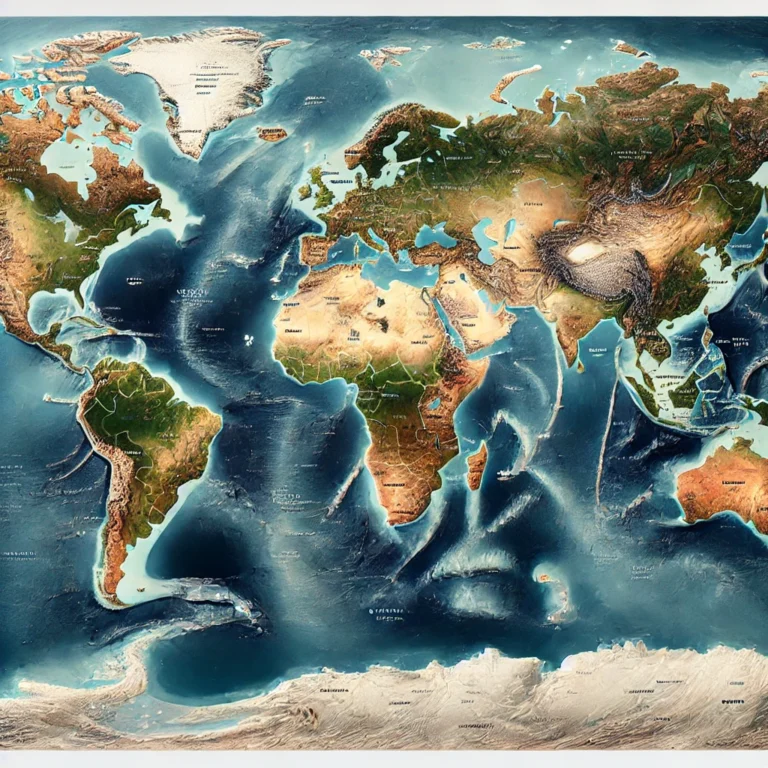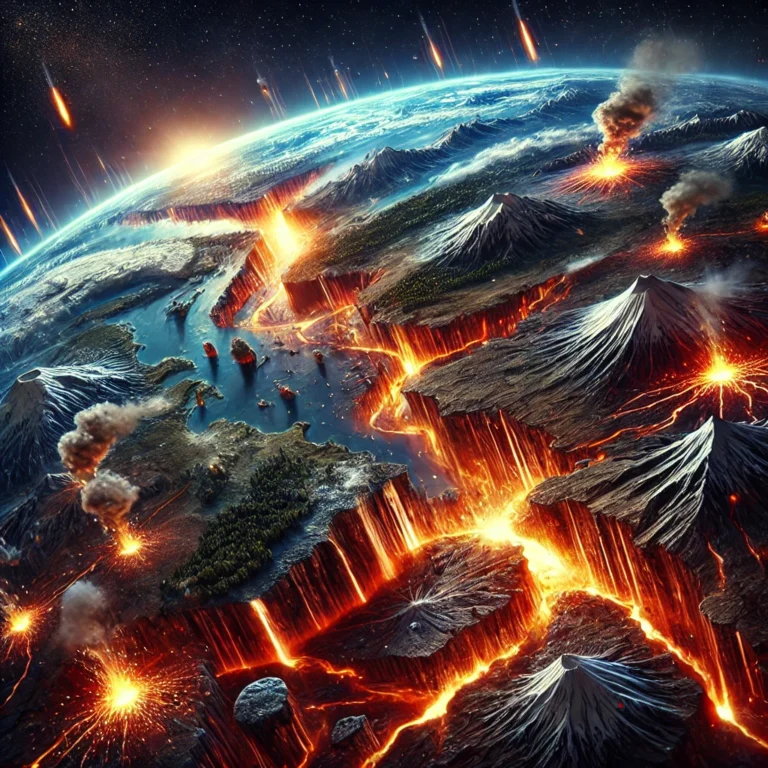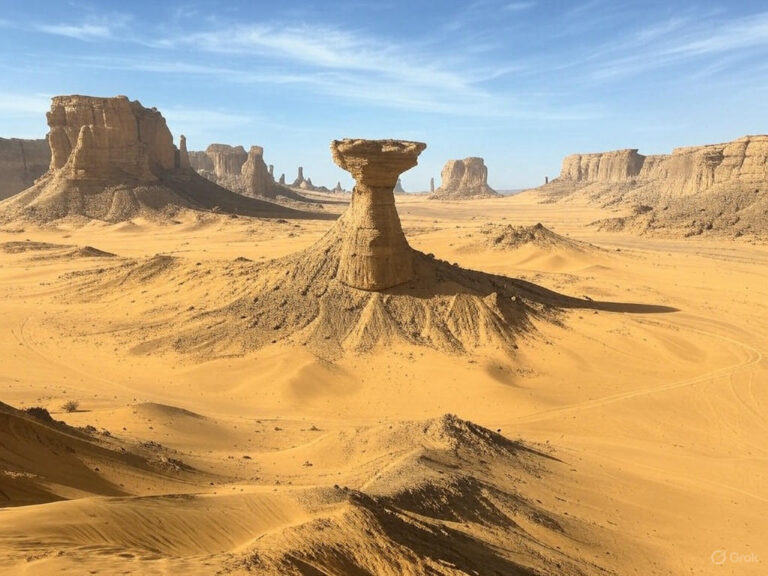Understanding Trewartha’s Climate Classification
Suppose you are on a journey, starting at the sweltering equator, moving through lush forests, dry deserts, temperate lands, and finally, reaching the icy poles. This is precisely how G.T. Trewartha classified the world’s climates—using temperature and precipitation as the guiding factors, but with a simplified approach compared to Koeppen and Thornthwaite.
Unlike Koeppen, who identified numerous subtypes based on intricate mathematical formulas, Trewartha believed in a more practical and comprehensible classification. He divided the world into six primary climatic zones: A, B, C, D, E, and F, with B (Dry Climates) classified by precipitation, and all others classified by temperature.
1. Tropical Humid Climates (A Climates)
Our journey begins at the equator, where the sun’s warmth is relentless, and rain is abundant. The air here is thick with humidity, making it a greenhouse of life. These A Climates are characterized by high temperatures year-round and no winter season.
However, depending on rainfall patterns, this tropical zone is further divided into:
- Af – Tropical Rainforest Climate: Like the Amazon or the Congo Basin, where rain pours almost daily, fostering dense jungles teeming with biodiversity.
- Am – Monsoon Climate: Found in places like India and Southeast Asia, where seasonal winds bring heavy rains for months, followed by a drier period.
- Aw – Savanna Climate: Picture the grasslands of Africa, with scattered trees, alternating between a wet and a dry season.
2. Dry Climates (B Climates)
Moving away from the equator, we reach vast drylands where evaporation exceeds rainfall, leading to extreme temperatures and parched landscapes. These are the B Climates, further divided based on aridity and temperature.
Arid (BW) and Semi-arid (BS) Climates:
- BWh – Hot Desert Climate: Think of the Sahara, with scorching days, freezing nights, and almost no rainfall.
- BWk – Cold Desert Climate: Found in places like Mongolia, where it’s dry but much colder.
- BSh – Hot Semi-arid (Steppe) Climate: Found on the fringes of deserts, like parts of the Deccan Plateau in India, where some vegetation survives.
- BSk – Cold Semi-arid (Steppe) Climate: Found in places like Central Asia, with sparse grasslands and extreme winters.
The boundary between hot dry and cold dry climates is determined using the 0°C isotherm of the coldest month.
3. Middle Latitude Wet Climates (C Climates)
As we journey further, we enter the mid-latitudes, where temperatures are milder, and seasonal variations become more pronounced. These are the C Climates, forming the world’s most habitable regions.
- Cs – Mediterranean Climate: Found in California, Spain, and parts of Australia, where summers are dry and winters are mild and wet.
- Ca – Subtropical Humid Climate: Think of China or the southeastern USA, where summers are hot and humid, and rainfall is well-distributed.
- Cb – Marine Climate: Common along western Europe’s coasts, where the ocean moderates temperatures, keeping winters mild and summers cool.
4. Microthermal or Temperate Climates (D Climates)
Moving northward (or into higher elevations), we enter the D Climates, where summers are warm but winters can be brutally cold. These climates are influenced by both westerlies in summer and polar winds in winter.
- Da – Continental Humid Climate (Hot Summer): Found in places like the American Midwest, where summers are scorching but winters can be harsh.
- Db – Continental Humid Climate (Cool Summer): Found in parts of Canada and Russia, where summers are shorter and milder.
- Dc – Subpolar Climate: Here, summer is fleeting, lasting just a couple of months. Think of Siberia, where winter dominates most of the year.
- Dd – Extreme Cold Climate: Found in the coldest regions, where the temperature of the coldest month drops below -38°C.
5. Boreal Climate (E Climates)
Now, we venture into the boreal zone, where winters are long and harsh, and summers are cool but short. Here, trees become sparse, giving way to tundra landscapes. This climate is found in high middle latitudes and is characterized by a very short frost-free season.
6. Polar Climates (F Climates)
Our journey concludes in the F Climates, where summer doesn’t exist, and ice reigns supreme. The sun remains weak, and the land is locked in a deep freeze.
- Ft – Tundra Climate: Found in the Arctic regions, where only hardy grasses and mosses survive.
- Ff – Ice Cap Climate: Dominating Antarctica and Greenland, where ice sheets stretch endlessly, and even the warmest month stays below 10°C.
Final Thoughts: Why Trewartha’s Classification Matters
Trewartha’s classification simplifies the complex nature of global climates, making it more practical and accessible while still being scientifically robust. His system recognizes that temperature and precipitation shape landscapes and ecosystems, influencing everything from agriculture and human settlements to biodiversity and weather patterns.
How Trewartha’s Classification Departs from Koeppen’s: A Thoughtful Evolution
To understand the differences between Trewartha’s and Koeppen’s climatic classifications, think of it like updating an old, complex road map into a modern, easy-to-follow GPS system. Both aim to guide us through the world’s diverse climates, but Trewartha simplified the journey, making it more practical for geographers.
1. Redefining the Boundary Between Hot and Cold Dry Climates (B Climates)
Koeppen determined the boundary between hot dry (h) and cold dry (k) climates using the 18°C (annual average temperature) isotherm.
🟢 Trewartha’s Improvement:
Instead of an annual average, he focused on the coldest month’s temperature, using 0°C (32°F) as the boundary. Why? Because a region’s winter conditions have a significant impact on vegetation and human habitation.
2. Adjusting the C-D Climate Boundary Based on Winter Severity
Koeppen separated C (mid-latitude mild) and D (severe mid-latitude) climates using the -3°C (26.6°F) isotherm of the coldest month.
🟢 Trewartha’s Improvement:
He shifted this boundary to 0°C (32°F), making it simpler and more aligned with real-world seasonal transitions.
3. Revising the C Climate Categories
Koeppen classified C climates based on precipitation seasonality, dividing them into:
- Cs (dry summers)
- Cw (dry winters)
- Cf (no dry season)
🟢 Trewartha’s Revision:
He modified this to focus on broader temperature variations, introducing:
- Cs (Mediterranean climate, still retained)
- Ca (subtropical humid, like parts of China)
- Cb (marine climate, influenced by westerlies)
Why the change? Because he wanted a classification that better reflected how land and water interact with climate rather than just focusing on precipitation timing.
4. Redefining D Climates Based on Summer Temperature
Koeppen’s D Climates were classified based on precipitation patterns, dividing them into:
- Dw (winter dry)
- Df (no dry season)
🟢 Trewartha’s Improvement:
Instead of precipitation, he classified D climates based on summer temperature, recognizing how temperature extremes shape ecosystems:
- Da (hot summer)
- Db (cool summer)
- Dc (subpolar, short summers)
- Dd (extreme cold)
This makes more sense for practical climate study, as regions with the same precipitation levels can have drastically different temperature conditions affecting vegetation, snowfall, and human activity.
5. Similarities Between Trewartha and Koeppen
Despite the differences, both systems share key principles:
✔ Empirical in nature – based on real-world climate observations.
✔ Temperature & precipitation as primary factors – both focused on these fundamental weather elements.
✔ Use of B climate for dry/arid zones – both agreed that deserts and steppes needed their own category.
✔ Flexible classification models – both systems could be adjusted based on new climate data.
Final Evaluation: Why Trewartha’s Classification Gained Popularity
✅ Simple & Clear – Unlike Koeppen’s complex mathematical thresholds, Trewartha’s system is easy to apply.
✅ Better reflects land & water influences – Helps explain why coastal and inland regions have different climates.
✅ More practical for geographers & planners – Because it focuses on real-world impacts of temperature and precipitation.
In summary, Trewartha didn’t discard Koeppen’s work—he refined it. His classification is like upgrading a complex, technical manual into a clear, user-friendly guide for understanding the world’s climates! 🌍






